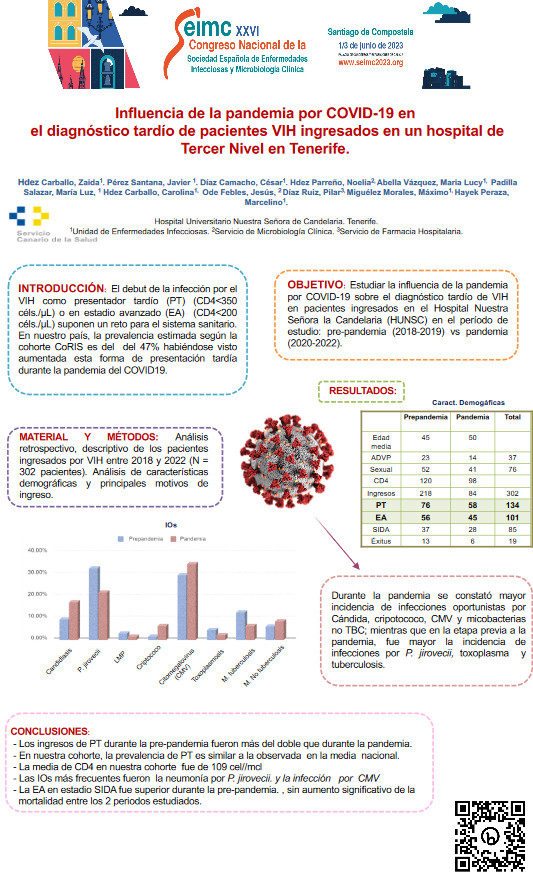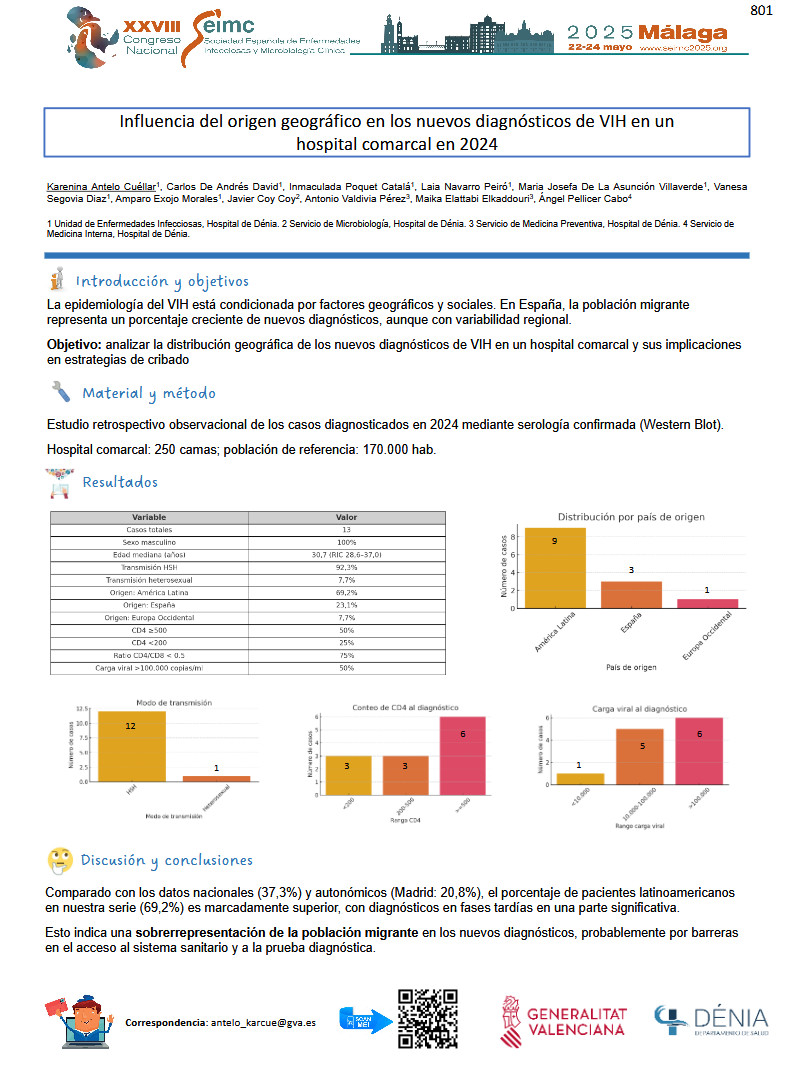Resum
Introduction: Human-immunodeficiency-virus (HIV) infection is still one of the most important and cost-related infection in the world. The subtype of the
virus is often associated with the continent/country of the acquisition of the HIV infection. In this HIV clinic office, the southern area of
Tenerife Island, El Hierro and La Gomera Islands are attended, in order to follow the HIV infection in this population. The aim of this study was to describe several demographic characteristics and analyze the different subtypes found in this clinic office. Methods: Overall 1776 patients followed during last twenty-five years in the clinic-office were considered. Different demographic characteristics,
subtypes of HIV and country of origin data were collected in patients who are actively followed (1327 patients) currently. Results: Male patients represented 1427 (80.35%) of the total patients. The average age of the patients in the diagnosis of the HIV infection was 38. In
701 (87.52%) the infection was caused by subtype B of the virus, 100 cases of non-B were detected, with almost half of cases (49%)
recombinant subtypes CRF01_AE/CRF02_AG, 16% of subtype G and 8% of subtype F. The origin of these patients is mostly Spanish (71.6%), followed by Centre-South American (10.5%) and other European countries (8%). In
the analysis of the non-B subtype patients, Spain is still the most frequent origin (35.2%), followed by Africa (28.6%), Centre-South America
(13.2%) and different European places (12.1%).
Seven patients were diagnosed of HIV-2 infection. Two patients were from Guinea-Bissau, two from Senegal, and one from Ivory Coast,
Nigeria and Spain. Conclusion: Despite The Canary Islands are places where different origins can be found, the subtype B of the virus is still the most prevalent. Centre/South American and from other European countries remain as the second and third (respectively) group of patients in frequency in
this office, which is related to the frequency of F and G subtypes of the HIV observed in this study. However, in the non-B subtypes, the
African patients underline their importance in this infection, as well as in the HIV-2 infection. According to the rest of the study, average age in the diagnosis results are very similar to other published series, as well as the male/female ratio ones.






